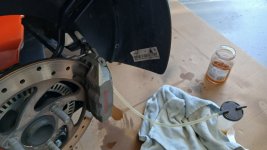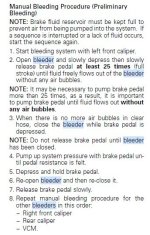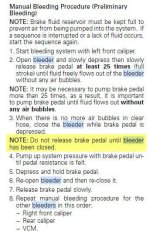I installed speed bleeders today and when I went to bleed the left front brake the brake pedal went all the way to the bottom, no pressure.
Do I just keep pumping till the line fills up?
I watched a video on speed bleeders but I can't reach the guy on his youtube channel. Advise would be appreciated.
Do I just keep pumping till the line fills up?
I watched a video on speed bleeders but I can't reach the guy on his youtube channel. Advise would be appreciated.



